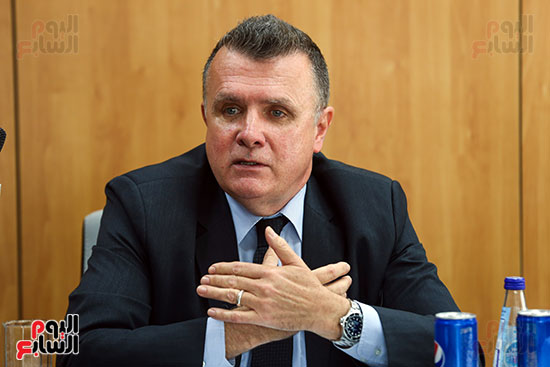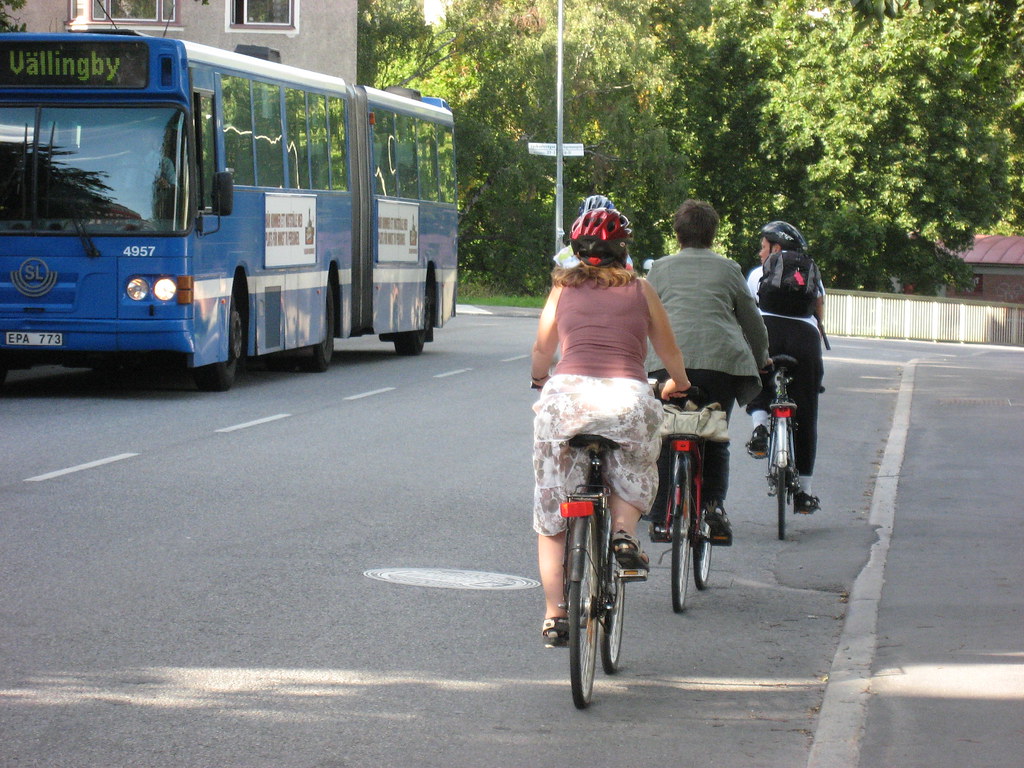CAIRO – 14 February 2020: Although the government has announced progress being made in amending traffic law and improving infrastructure, road accidents are still claiming thousands of lives annually in Egypt.
Egypt embarked on an extensive local program that included: toughening punishment on traffic violators, building new road networks, renovating bridges and launching drug-driving tests.
Seeking experience and knowledge exchanging with other countries, especially those have successful models to follow, has been a key factor in the Egypt’s development process. Speaking about road safety, Sweden developed an ambitious initiative in 1995, with the aim to eliminate accidents on Swedish roads, called “Vision Zero.”

Swedish Ambassador in Cairo Jan Thesleff - Samy Wahib/ Egypt Today
Egypt Today discussed the Swedish Ambassador in Cairo Jan Thesleff “Vision Zero,” the the possibility of adopting a similar approach to Egypt’s road safety plan and the global conference on road safety set to take place Feb. 19-20 in Stockholm.
Below is the interview:
ET: Would you tell us about Vision Zero that influenced many countries, and what achievements Sweden made under its umbrella?
Thesleff: Vision Zero is an initiative that the Swedish government launched in 1995, where all stakeholders are brought together with the joint vision that no individual should die or be seriously injured on Swedish roads.
And like all good ideas this one travelled fast. Just three years later the Parliament passed a Road Traffic Safety Bill in 1997 that put the Vision Zero into the Swedish law. The bill sets an ultimate target of no deaths or serious injuries on Sweden’s roads, and it is not satisfied with merely reducing accidents to an economically manageable level. Sweden has since modelled its road safety reform strategy on the Vision Zero approach.
This initiative has been highly successful in generating ambitious innovation and effort from both the public sector and the business community, grounded in the underlying simple fact that we are human and make mistakes. Sweden's Vision Zero has inspired road safety interventions in several other countries, sometimes also called sustainable safety (NL) or Safe System Approach (OECD). The first off, the mark were our Nordic neighbors. In 2014, New York adopted its own Vision Zero which has led to good results. Since then, another twenty cities in the USA have followed suit.
A formalized vision zero initiative in the middle east is being organized by business Sweden focusing on Oman, Kuwait and Qatar during Q4 20.
ET: What is a remarkable step that is taken by Sweden with regard to road safety and vehicles, or experience that Sweden would share with Egypt to cooperate in improving the status of roads in the country?
Thesleff: Sweden has been successful in moving from vision to action. Sweden world- leading when it comes to minimizing serious traffic accidents. For just over two decades different stakeholders in Sweden have been proactively working towards the goal of zero fatalities and serious injuries on the roads.
Vision Zero has had a huge impact on the work to improve road safety. Both the working methods used, and the choice of interventions have been improved. Collaboration in networks, governance by objectives and user governance have made things happen.
And now we can say that the work has yielded results. When Vision Zero was adopted by the Swedish Parliament, the number of fatalities caused by road accidents was 7 per 100,000 inhabitants. At that time, this was a low figure in a global perspective, and many people were skeptical about it being possible to reduce the figure even further. Since then, the number of traffic fatalities in Sweden has been more than halved, at the same time as the volume of traffic has increased dramatically.
Historically, traffic safety work has been focused on management by rules. In the work on realizing Vision Zero, management by rules still exists, but occupies less space than in the past. New measures and new approaches have been introduced, in which networking with all related entities and management by objectives are fundamental approaches.
For example, many roads have been equipped with a central barrier to prevent head-on accidents; the police can control the speed of cars with cameras; many four-road junctions have been replaced with roundabouts; the automotive industry is investing in safer cars, buses and safety enhancing equipment (e.g. traffic cameras and traffic monitoring systems); and when the traffic environment in urban areas is designed, the focus is on vulnerable road-users.
In order to spread information and experience on the approach, vision zero academy have initiated a week-long international course. It is held in Sweden every September. The course is targeted for a broad audience, as everyone who works in practice with traffic safety issues in various agencies such as government authorities, industry, municipalities, NGOs and academia. It is also highly relevant for experts within UN authorities, development banks, and other international organizations.
The course lecturers are Swedish Transport Administration experts in their respective fields, as well as guest lecturers from other authorities, municipalities, academies and industry.

Swedish roads - CC via Flickr
ET- In November, you held a meeting with the Egyptian Transport Minister, where you discussed ways of cooperation in road safety. What did you agree upon during the workshop?
Thesleff: When it comes to public transportation, we know that many countries are suffering from overcrowded roads, and also to foster safe environment for people, and we believe that there is a lot that we can learn from you, and you learn from us.
During the meeting, we talked about finding smooth transport solutions, and you are building a very impressive metro system in Cairo, and there are other ways to ease traffic problems like the Bus Rapid Transit (BRT) systems for buses, and measures to reduce speed. I was happy to discuss with our Egyptian partners ways of educating people and children about traffic risks.
Road safety is a sign for caring about people. All of us depend on transportation, and it is not something that will go away. I feel a very strong engagement from our Egyptian partners and people here are very responsive for this, and I believe Egypt and Sweden would make important partners in this regard.
Both Sweden and Egypt, share a common agenda when it comes to making transport systems more effective and safer. Sweden has a long experience of public transportation and road safety and we have learned that impactful change only can be achieved through a systemic approach including many different components and dimensions. Successful change doesn’t happen overnight nor via single measure implemented in isolation and with that said we are confident that we will have many exciting joint initiatives together.
ET: Egypt is aiming to enhance its post-crash emergency care, especially on highways, does Sweden has a vision regarding this matter, and how can it help Egypt in this regard?
Thesleff: Since 2016, an agreement has been reached between the Swedish Transport Administration and the Police on cooperation in the field of road safety.
The Swedish Transport Administration and the Police are equal partners in this cooperation and must consider each other's assignments and priorities as the respective authorities do. The purpose of the agreement is to work together to achieve increased road safety and thereby contribute to a reduced number of dead and seriously injured as well as increased safety in the road traffic environment.
Examples of areas of this cooperation includes, speed compliance, joint information efforts, sober traffic, in-depth studies of fatal traffic accident and Occupational traffic; this agreement was signed by the Chief of Police and the Directorate-General of the Swedish Transport Administration and is followed up at annual meetings between them.
ET: According to WHO reports, the goal set to reduce road accidents worldwide by 50% until 2020 was not achieved. In your opinion, are we going to see a new decade of action set during this year's conference?
Thesleff: I think this year we would acknowledge the lessons learnt from the Decade of Action for Road Safety 2011-2020 such as the need to promote an integrated approach to road safety including safe system approach and Vision Zero, pursue long-term and sustainable safety solutions, strengthen national inter-sectoral collaboration including engagement with NGOs and civil society as well as businesses and industry which contribute to and influence the social and economic development of countries.


Comments
Leave a Comment